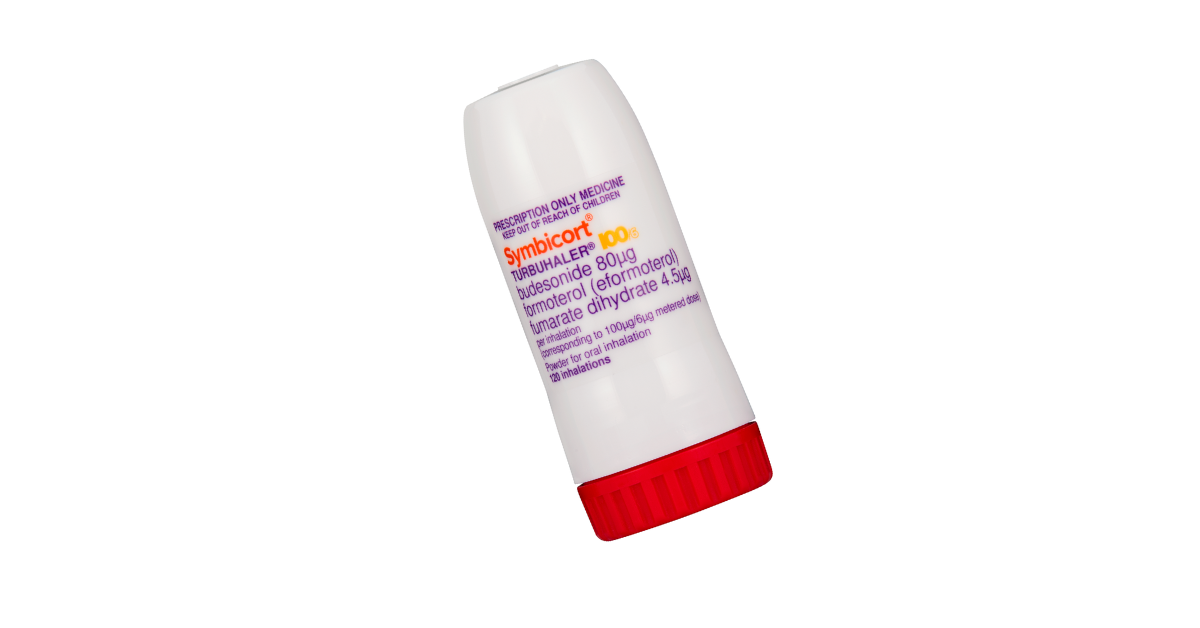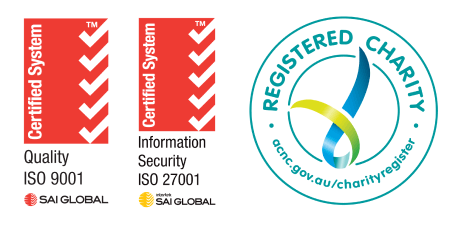
Symbicort
Symbicort prescriptions for mild asthma have been in use since 2020
The addition of an inhaled corticosteroid (ICS) as-required in the management of mild asthma instead of inhaled short acting beta-2 (SABA) agonist alone was shown to be beneficial in the Sigma trials, published in 2018. The Australian Asthma Handbook was updated in 2020 to reflect this evidence change, and Symbicort was added to the PBS for as-required use in mild asthma in June 2020.
Why was this change made?
Children and adults with mild asthma continue to experience severe asthma exacerbations and unfortunately some may die.
Adherence to preventer medication is a challenge, particularly with infrequent symptoms. Patients with mild asthma often rely on SABAs alone. Overuse of SABAs, combined with poor adherence to preventers, increases the risk of death. By co-administering anti-inflammatory medication every time a reliever is used, airway inflammation is better managed and risk of severe exacerbation is reduced.
Australian asthma guidelines now include as-needed inhaled low-dose budesonide–formoterol (Symbicort) for patients with mild asthma. This combination gives rapid symptom relief and also reduces the risk of severe exacerbations. It provides an alternative to regular daily low-dose ICS plus an as-needed SABA or as-needed SABA alone.
Why choose the Symbicort Turbuhaler over the Rapihaler?
Symbicort comes in 2 devices – a turbuhaler and a rapihaler. Dr Joanna Lawrence, a consultant paediatrician at The Royal Children’s Hospital Melbourne, said that despite the significant advantages of the turbuhaler, many people are still using the rapihaler.
“Over the age of 8 years, turbuhalers should be the device of choice. Yet, we see rapihaler prescriptions surprisingly often,” said Dr Lawrence.
“Rapihalers use HFCs which are potent greenhouse gases and the spacers (required for effective use) are cumbersome to carry around.
Symbicort turbuhalers have the following advantages over rapihalers for patients aged 8 years and over:
- They are environmentally friendly.
- They are easily portable (and slip nicely into your pocket).
- They have the strongest evidence base (and were used in all the trials).
HealthPathways for asthma care
Performing spirometry during the pandemic – practical tips
Early in the COVID-19 pandemic, peak bodies recommended the suspension of respiratory function testing, including spirometry testing, in general practice settings. Spirometry is a high-risk procedure because it requires a forced expiratory maneuver which could generate aerosols, with potential transmission of COVID-19.
As the pandemic continues, there is an increasing need to be able to perform spirometry in some circumstances. The Thoracic Society of Australia and New Zealand (TSANZ) and Australia and New Zealand Society of Respiratory Science (ANZSRS) have this year published updated guidelines for performing spirometry in primary care settings.
They recommend:
- only performing spirometry when clinically necessary
- performing screening questions for the presence of any potential COVID-19 symptoms and not going ahead if any are present, or if the patient is COVID-positive
- temperature screening the patient prior to proceeding
- using inline viral/bacterial filters with your spirometry device
- using a well-ventilated room for the procedure, or leaving the room unoccupied between tests
- only having the subject and the tester in the room, and socially distancing
- observing cough etiquette and respiratory hygiene
- health workers should wear a fit tested N95 mask and face protection
- patients should bring their own bronchodilator and spacer
- thorough cleaning and disinfecting all surfaces between patients






